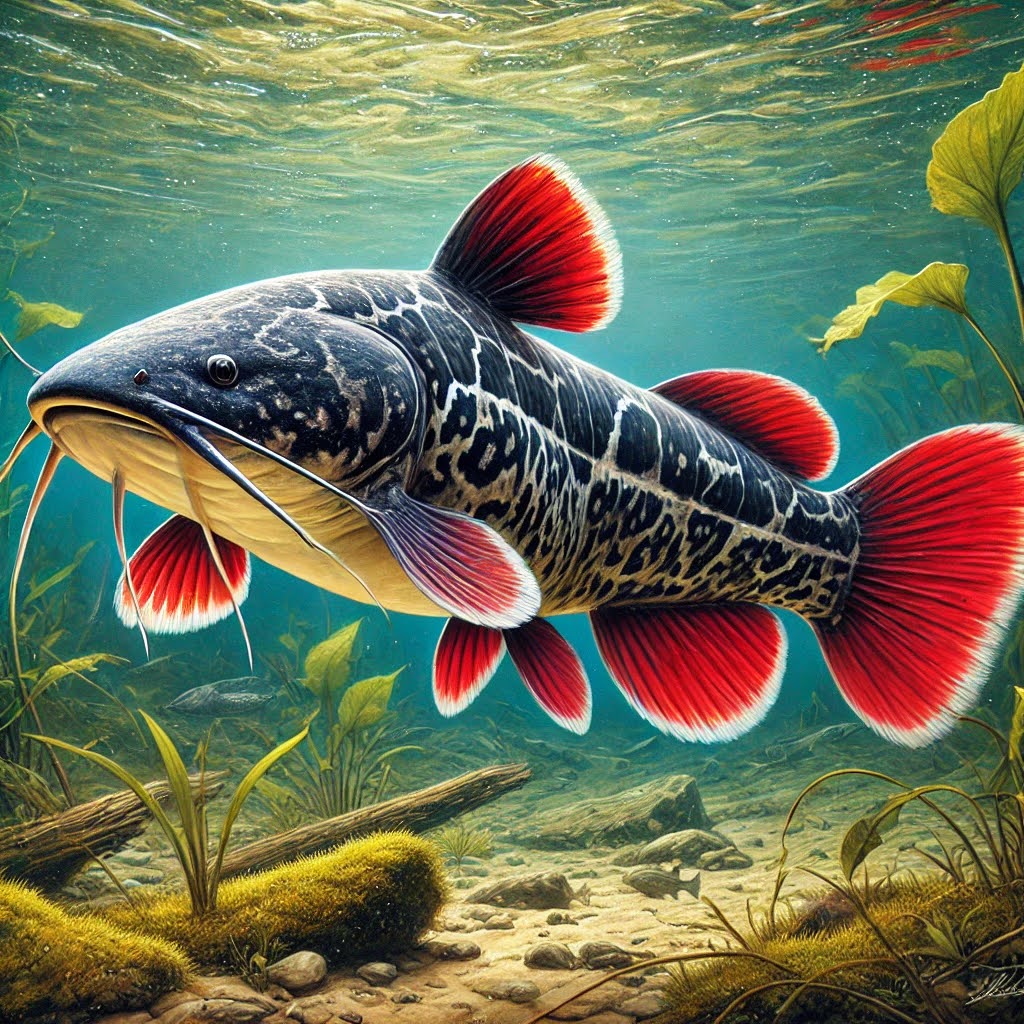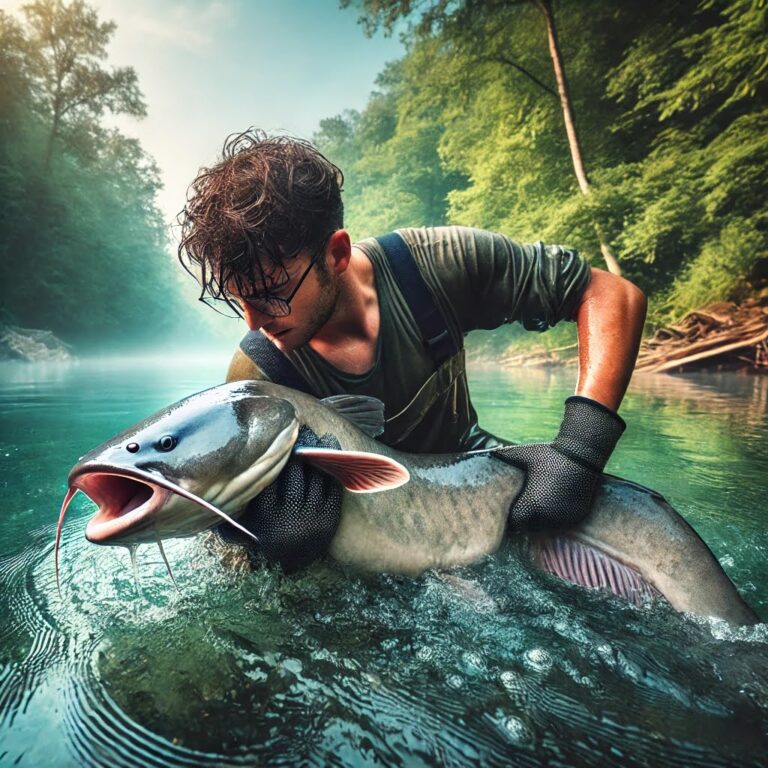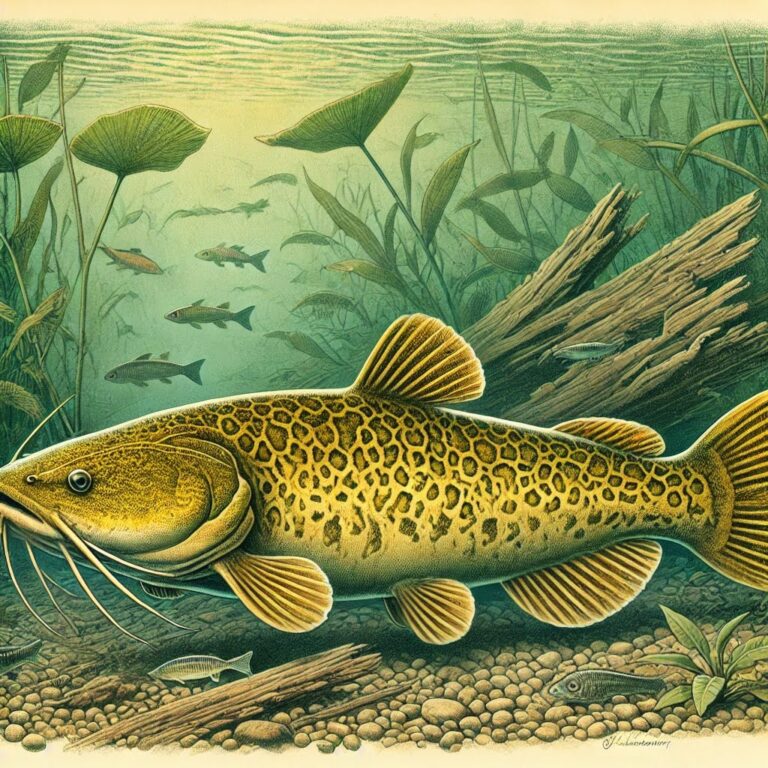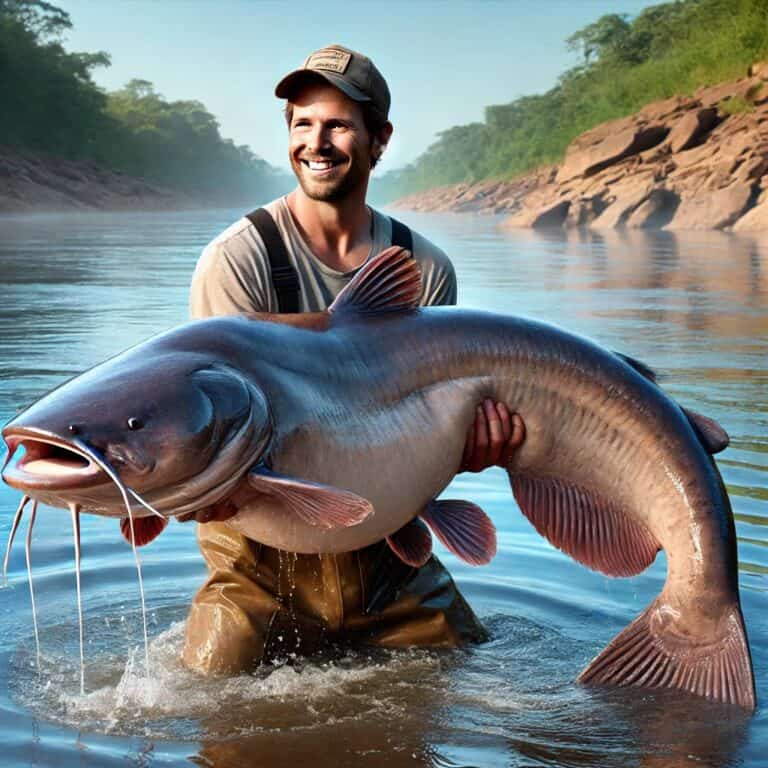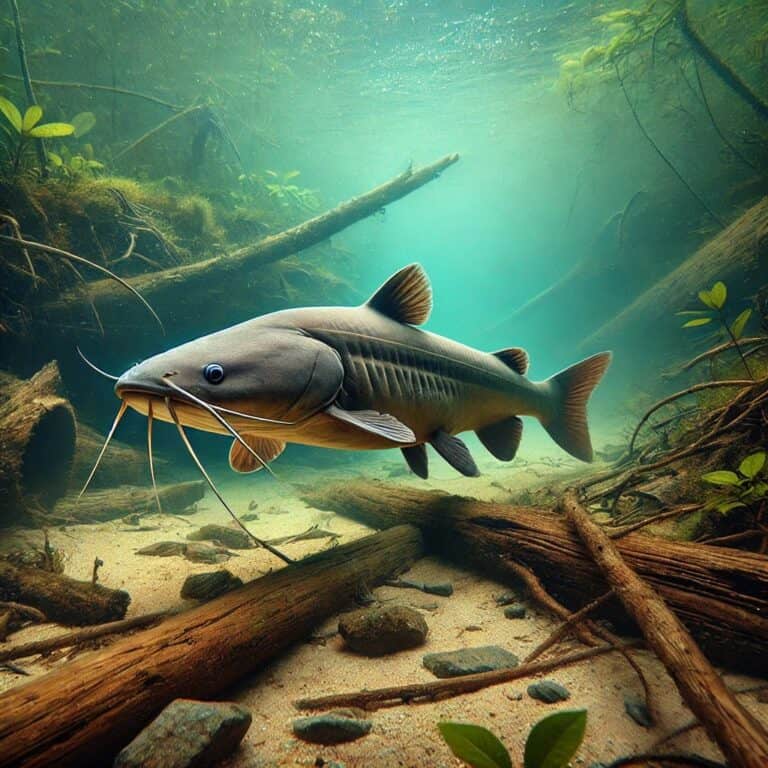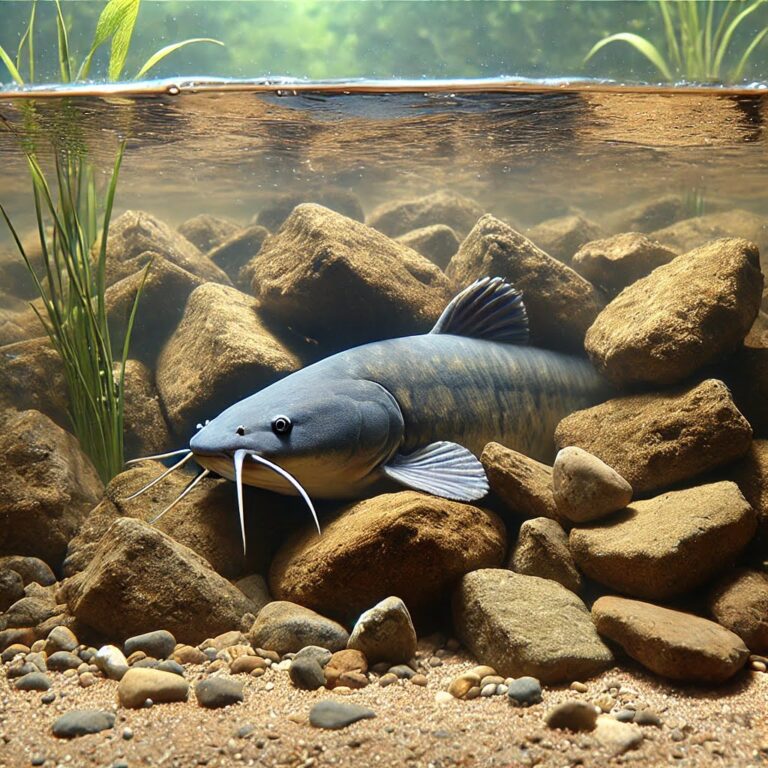Redtail Catfish: A Guide to Florida’s Exotic Catfish Species
South Florida’s waterways are a vibrant tapestry of aquatic life, teeming with native and non-native species.
Among the most fascinating are the exotic catfish species, with the Redtail Catfish standing out as a particularly striking and sought-after specimen.
This article delves into the world of the Redtail Catfish and its fellow exotic catfish species, exploring how they arrived in South Florida, where you can find them, and the various methods to catch them.
The Alluring Redtail Catfish
The Redtail Catfish (Phractocephalus hemioliopterus) is a captivating fish, native to the Amazon, Orinoco, and Essequibo river basins in South America.
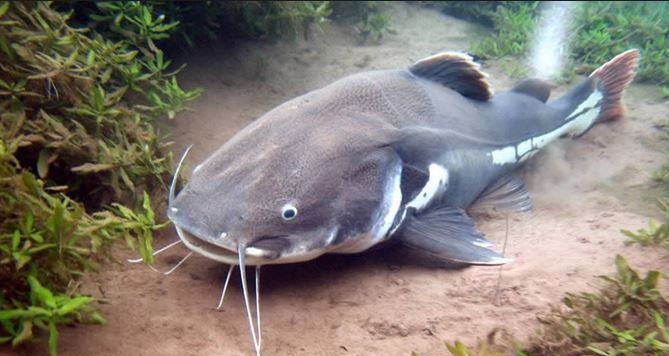
(image source: Wikipedia)
Recognizable by its vivid red tail and sleek, dark body with white spots, the Redtail Catfish can grow to impressive sizes, often reaching lengths of up to 5 feet and weighing over 100 pounds.
This species has become a popular angler target due to its size, strength, and striking appearance.
How They Got Here
The introduction of the Redtail Catfish to South Florida is primarily attributed to the aquarium trade.
These fish are prized by hobbyists for their exotic appearance and rapid growth.
However, as they outgrow home aquariums, some owners have released them into local waterways, where they have successfully established populations.
This practice, although illegal and environmentally hazardous, has contributed to the spread of this and other exotic species.
Where to Find Them
Redtail Catfish can be found in various freshwater bodies across South Florida, including canals, ponds, and lakes.
Notable locations include:
• The Miami Canal System: An extensive network of interconnected waterways that provide an ideal habitat for these catfish.
• Lake Ida and Lake Osborne: Located in Palm Beach County, these lakes are known for their diverse fish populations, including Redtail Catfish.
• Everglades Waterways: The vast and intricate water systems of the Everglades also harbor these exotic giants.
Catching Redtail Catfish
While rod and reel are the traditional methods for catching Redtail Catfish, several alternative techniques can be effective and thrilling:
1. Cast Netting
Description:
A cast net is a circular net with weights around its edge, designed to be thrown by hand.
Technique:
The net is thrown over a school of fish, and the weights cause it to sink quickly, trapping the fish underneath. The angler then pulls the net back, capturing the fish.
Tips:
Cast netting requires practice to perfect the throwing technique. It’s most effective in shallow waters where fish are visible from the surface.
2. Seine Netting
Description:
A seine net is a large net with floats on the top edge and weights on the bottom edge, used to encircle fish.
Technique:
Two people are usually required to operate a seine net. They drag the net through the water, creating a barrier that captures fish as it is pulled towards the shore or a boat.
Tips:
This method is suitable for capturing large numbers of fish in open, shallow areas. It’s commonly used in rivers and along shorelines.
3. Gill Netting
Description:
A gill net is a vertical net that hangs in the water, allowing fish to swim into it and become entangled by their gills.
Technique:
The net is set in place, either anchored or left to drift. Fish swim into the net and are caught by their gills as they attempt to back out.
Tips:
Gill netting is highly effective but regulated due to its potential to overfish and harm non-target species. It is essential to check local regulations before using this method.
4. Trammel Netting
Description:
A trammel net is composed of three layers of netting: a fine-mesh inner layer and two larger-mesh outer layers.
Technique:
Fish swim through the larger outer mesh and become trapped in the finer inner mesh. This method is particularly effective for catching larger fish like Redtail Catfish.
Tips:
Like gill netting, trammel netting is subject to regulation. It is effective in both shallow and deep waters, making it versatile for different environments.

Other Exotic Catfish Species in South Florida
While the Redtail Catfish is a star attraction, South Florida’s waterways are home to several other exotic catfish species, each with its unique characteristics and allure.
1. The Channel Catfish
Although native to North America, the Channel Catfish (Ictalurus punctatus) has been widely introduced to various regions, including South Florida, where it thrives.

(image source: Wikipedia)
Known for its forked tail and smooth, scaleless body, the Channel Catfish is a versatile species that adapts well to different environments.
How They Got Here:
Channel Catfish were introduced to enhance local fisheries and provide a robust population for sport fishing.
Where to Find Them:
Commonly found in rivers, lakes, and reservoirs throughout South Florida.
Catching Methods:
Besides rod and reel, methods like jug fishing, where baited lines are attached to floating jugs, and noodling, catching catfish by hand, are popular.
2. The Blue Catfish
The Blue Catfish (Ictalurus furcatus) is another North American native that has found a home in South Florida.
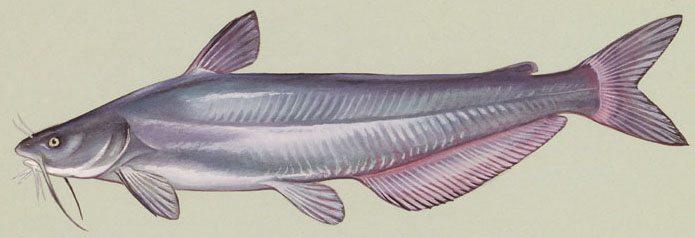
(image source: Wikipedia)
Distinguished by its blue-gray color and substantial size, the Blue Catfish can grow larger than the Channel Catfish, making it a prized catch for anglers.
How They Got Here:
Introduced for similar reasons as the Channel Catfish, to bolster local fisheries.
Where to Find Them:
Frequently inhabits large rivers and lakes, including the St. Johns River and Kissimmee Chain of Lakes.
Catching Methods:
Techniques like drift fishing, where baited lines are allowed to move with the current, and setlining, where stationary baited lines are left overnight, are effective.
3. The Flathead Catfish
The Flathead Catfish (Pylodictis olivaris) is known for its flat, broad head and mottled yellow-brown body.
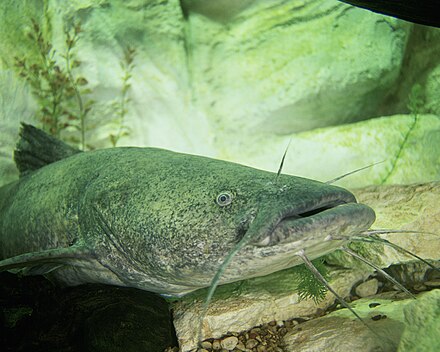
(image source: Wikipedia)
This species is a formidable predator and can reach impressive sizes, adding to its appeal among anglers.
How They Got Here:
Introduced for sport fishing and to control baitfish populations.
Where to Find Them:
Prefers deep, slow-moving waters, often found in large rivers and reservoirs.
Catching Methods:
Besides rod and reel, techniques like limb lining, where lines are attached to overhanging tree limbs, and trapping, using specially designed fish traps, are used.
Conservation and Ecological Impact
The introduction of exotic catfish species, including the Redtail Catfish, has sparked debate among ecologists and conservationists.
While these fish add to the region’s biodiversity and provide exciting opportunities for anglers, they can also disrupt local ecosystems.
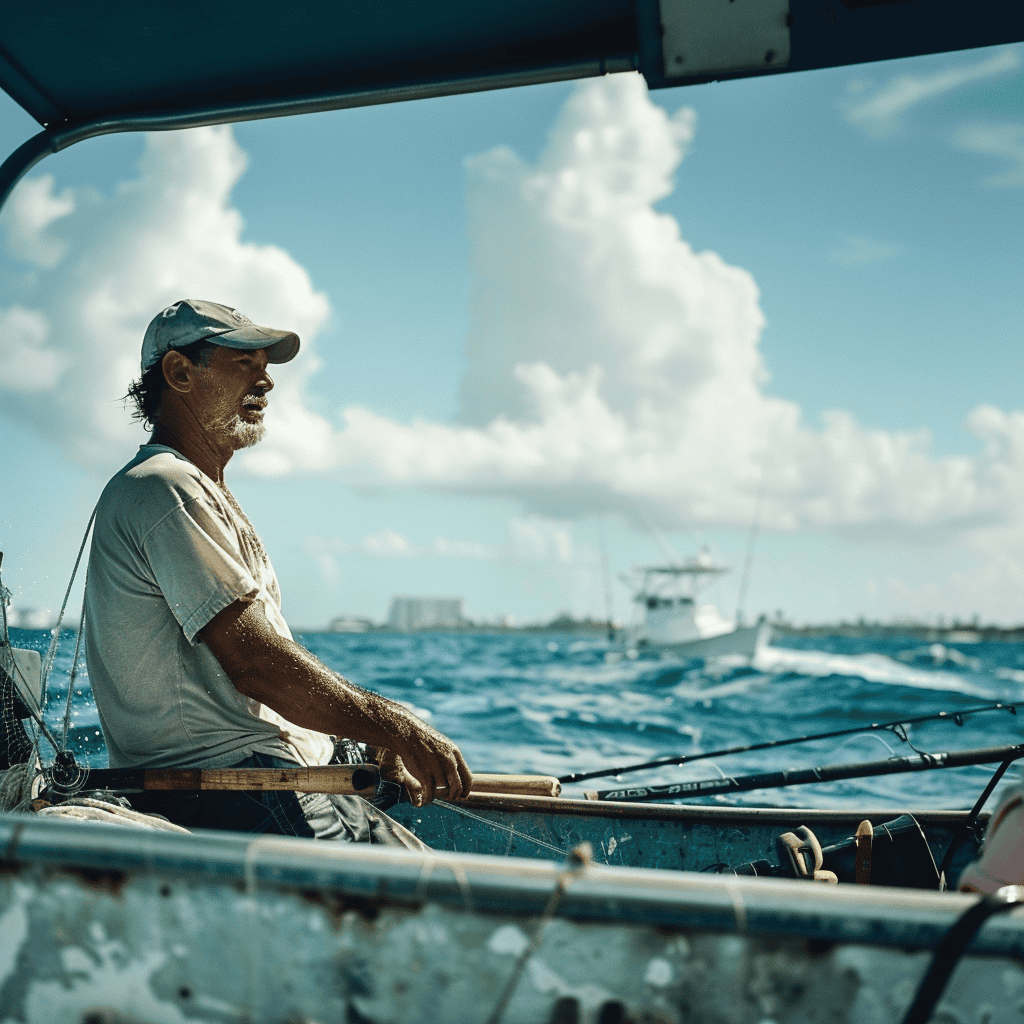
Exotic species may compete with native fish for food and habitat, potentially leading to declines in native populations.
Efforts to manage and control these populations are ongoing, with measures such as monitoring and regulating releases, promoting responsible fishing practices, and educating the public about the ecological impacts of introducing non-native species.
Fishing Etiquette and Ethical Practices
When fishing for exotic catfish in South Florida, it’s essential to adhere to ethical practices and local regulations to ensure the sustainability of the waterways and their inhabitants.
Here are some key points to consider:
Catch and Release:
If you do not intend to keep the fish, handle it carefully to minimize stress and injury before releasing it back into the water.
Respect Local Regulations:
Be aware of and comply with local fishing regulations, including size and bag limits, to avoid penalties and contribute to conservation efforts.
Use Appropriate Gear:
Ensure your fishing gear is suitable for the size and strength of the fish you’re targeting to prevent unnecessary harm.
Minimize Environmental Impact:
Avoid leaving behind trash or fishing gear, and be mindful of the natural environment to preserve it for future generations.
Conclusion
The Redtail Catfish and other exotic catfish species in South Florida’s waterways offer the chance to have a unique and thrilling fishing experience.
Learning about their origins, habitats, and the various methods of catching them fostered a deeper appreciation for these remarkable fish.
By practicing responsible fishing and adhering to ethical guidelines, we can enjoy the wonders of these exotic catfish while contributing to the health and sustainability of South Florida’s diverse aquatic ecosystems.
The Redtail Catfish and its exotic relatives await you in the waters of South Florida.
Happy fishing!

